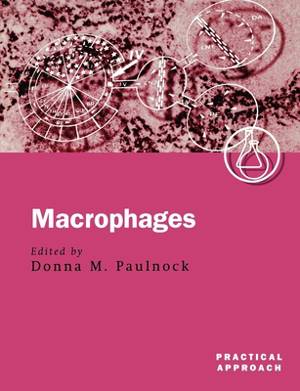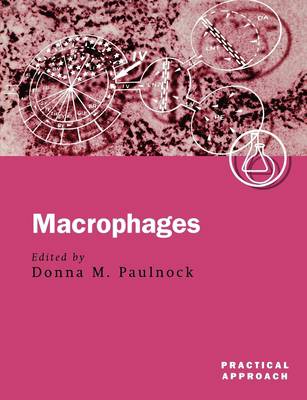
Bedankt voor het vertrouwen het afgelopen jaar! Om jou te bedanken bieden we GRATIS verzending (in België) aan op alles gedurende de hele maand januari.
- Afhalen na 1 uur in een winkel met voorraad
- In januari gratis thuislevering in België
- Ruim aanbod met 7 miljoen producten
Bedankt voor het vertrouwen het afgelopen jaar! Om jou te bedanken bieden we GRATIS verzending (in België) aan op alles gedurende de hele maand januari.
- Afhalen na 1 uur in een winkel met voorraad
- In januari gratis thuislevering in België
- Ruim aanbod met 7 miljoen producten
Zoeken
€ 157,95
+ 315 punten
Omschrijving
Macrophages are an important part of the immune response and are characterized by their ability to phagocytose foreign matter. However the difficulties involved in macrophage isolation mean they are some of the body's least explored cells. Macrophage Methodology describes how to isolate moderate to high yields of viable cells from a variety of specific tissue sites under both normal and pathological conditions and then goes on to give protocols for macrophage purification. The third chapter covers techniques used to identify and measure endocytic and phagocytic capabilities using immunochemistry and fluorescent analysis. Chapter four identifies the key issues relating to the study of macrophages as antigen presenting cells and has protocols for the major assays used to measure antigen processing and presentation. Also covered are the theoretical and practical issues related to the processing and presentation of intracellular pathogens for which macrophages are the major host cell. The methods described for measuring macrophage secretory products concentrate on bioassays for molecules where no ELISA is available. The next two chapters cover measuring macrophage activity in vitro and in vivo. Finally methods are described for the analysis of gene expression in macrophages. A variety of broad techniques have been brought together in one affordable volume to make Macrophage Methodology an essential buy for anyone studying macrophages.
Specificaties
Betrokkenen
- Uitgeverij:
Inhoud
- Aantal bladzijden:
- 228
- Taal:
- Engels
- Reeks:
- Reeksnummer:
- nr. 239
Eigenschappen
- Productcode (EAN):
- 9780199636884
- Verschijningsdatum:
- 16/11/2000
- Uitvoering:
- Paperback
- Formaat:
- Trade paperback (VS)
- Afmetingen:
- 188 mm x 245 mm
- Gewicht:
- 508 g

Alleen bij Standaard Boekhandel
+ 315 punten op je klantenkaart van Standaard Boekhandel
Beoordelingen
We publiceren alleen reviews die voldoen aan de voorwaarden voor reviews. Bekijk onze voorwaarden voor reviews.








